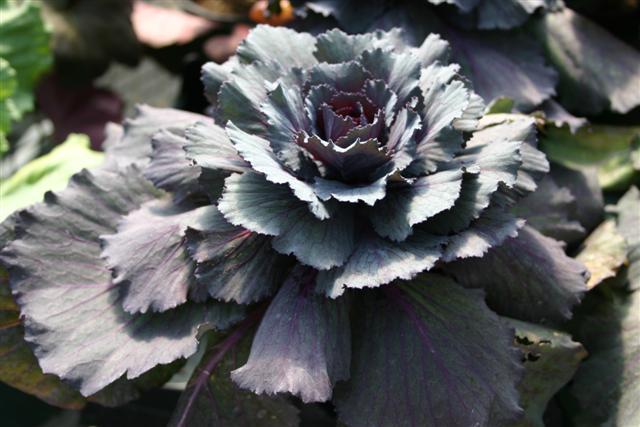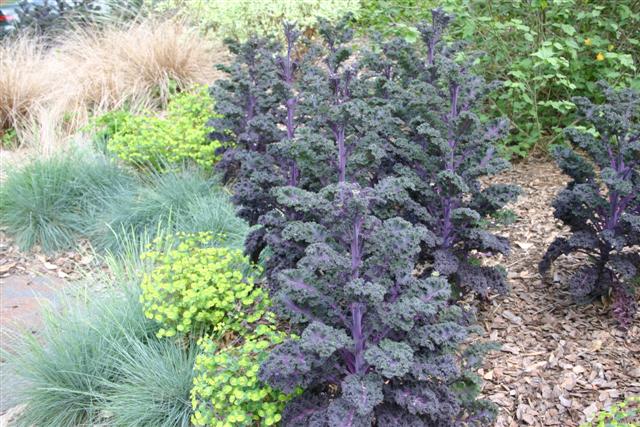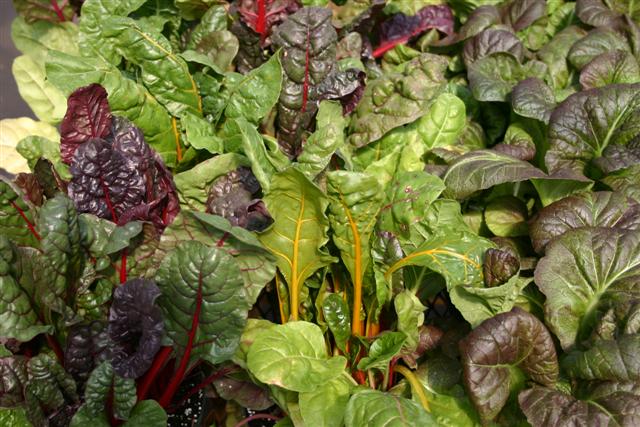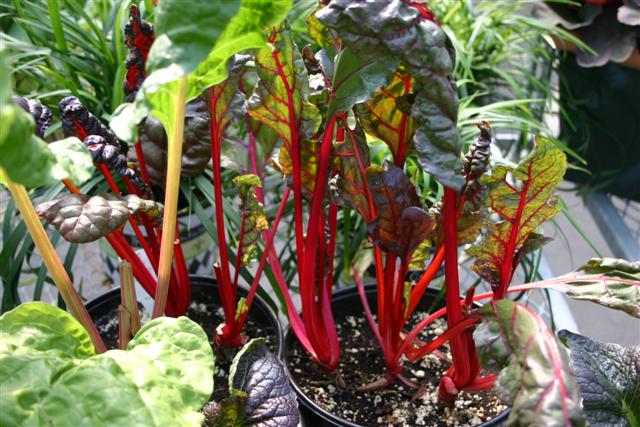Georgia Gardener Newsletter Design Tip: October 2, 2008

|
Need help?
Check out our
Services. |
| A Rainbow of Pansy Flower Colors |
My poor neighbors in Montana could never imagine having such colorful winter
gardens full of flowering plants and dazzling foliage. Aside from some
of their blue and/or golden conifers, their main winter colors are brown
and white. I guess that works for them since no one really sits outside
during those months anyway.
For years, the cool season annual garden consisted mainly of mums and asters
mixed with pansies in the fall followed by the lone flowering pansies through
the winter into early spring when they could be combined with snapdragons
and sweet peas. One day someone in a moment of genuis inspiration got the
idea to use cool season vegetables as ornamentals for fall, winter and
early spring color. Brilliant!
 |
 |
| Leaves of Ornamental Cabbage |
Redbor Ornamental Kale |
Cool season annuals are typically planted from late September to mid October
in soil that has been well-amended and is located in full sun. Remember
that areas in partial shade during the summer and fall can be in full sun
once the deciduous trees have dropped their leaves. Because these ornamental
vegetables as well as pansies are annuals, they are heavy feeders and need
regular applications of fertilizer every few weeks. It's best to use fertilizers
that are labeled as pansy bloom boosters as they are formulated to work
better in cooler soil temperatures. Be on the look out for pest problems
from caterpillars, snails, slugs, rabbits and deer. Cool season annuals
are usually removed in mid April and replaced with summer annuals. Note:
pansies are actually perennial although they usually look pretty ratty
in the summer which is why they are usually removed. One year, I decided
to leave mine. I cut them back and planted summer annuals to hide them.
When I removed the summer annuals that fall, the pansies rebounded.
Since the ornamental varieties of vegetables have been grown for their
looks, they may not taste as good as those grown strictly for culinary
purposes. However, give them a try if you want and let us know how they
taste. I'm hopeful that other cool season vegetables such as broccoli,
collards, spinach and lettuce will be bred for ornamental purposes at some
point in the future thus widening our winter annual garden choices.
 |
 |
| A Mixture of Swiss Chard Foliage |
Red Stems of Swiss Chard |
Final Thoughts
I hate to sound like a broken record, but yes there are some cool season annuals that have become pest plants. Crimson
clover (Trifolium incarnatum) and many of the mustards (Brassica spp.) have been listed as non-native
invasive plants in some parts of the U.S.
Copyright © 2008 by Theresa Schrum - All rights reserved
No part of this website may be reproduced without the expressed written permission of Theresa Schrum





